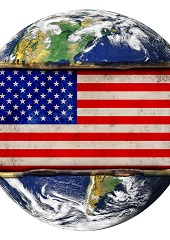The Human Side of North Korea
North Koreans aren’t the robots they are often portrayed as in Western newspapers and magazines.
January 10, 2015

Since he was young, faraway countries and travelling have fascinated Eric Lafforgue. He took up photography in 2006. His work on North Korea, Papua New Guinea, Ethiopia and other countries has appeared in magazines and newspapers worldwide.
Everywhere I go, I try to show the human side of a country. What’s behind the headlines that you see or read in the media.
I’ve been six times to North Korea. Every time they’ve opened new places to visit, and I’ve kept on meeting local people. My contact with them has always been good. On my first visit in 2008, they wanted to see the pictures on my camera screen. Nowadays, especially in parks and at funfairs, they often ask me to pose for them and take a picture of me with their camera.
In Jung Pyong Ri, a small seaside village, tourists are allowed to share food and sleep in the homes of local fishermen. For sure, these people are more privileged than many, and propaganda may be everywhere, but they have kept a warm side if you make the effort to discover it.
North Koreans aren’t the robots they are often portrayed as in Western newspapers and magazines.
Text and photographs by Eric Lafforgue
In his uncle’s house in Jung Pyong Ri village, beneath the portraits of North Korea’s first two leaders, Kim Il-sung, and his son, Kim Jong-il, a boy plays his guitar before going to school. He had stayed overnight in the house to play music with his twin cousins who live there
 Since he was young, faraway countries and travelling have fascinated Eric Lafforgue. He took up photography in 2006. His work on North Korea, Papua New Guinea, Ethiopia and other countries has appeared in magazines and newspapers worldwide.
Since he was young, faraway countries and travelling have fascinated Eric Lafforgue. He took up photography in 2006. His work on North Korea, Papua New Guinea, Ethiopia and other countries has appeared in magazines and newspapers worldwide.The Other Hundred is a unique photo-book project (order here) aimed as a counterpoint to the Forbes 100 and other media rich lists by telling the stories of people around the world who are not rich but who deserve to be celebrated.
Its 100 photo-stories move beyond the stereotypes and cliches that fill so much of the world’s media to explore the lives of people whose aspirations and achievements are at least as noteworthy as any member of the world’s richest 1,000.

Selected from 11,000 images shot in 158 countries and submitted by nearly 1,500 photographers, The Other Hundred celebrates those who will never find themselves on the world’s rich lists or celebrity websites.
Takeaways
North Koreans aren’t the robots they are often portrayed as in Western newspapers and magazines.






